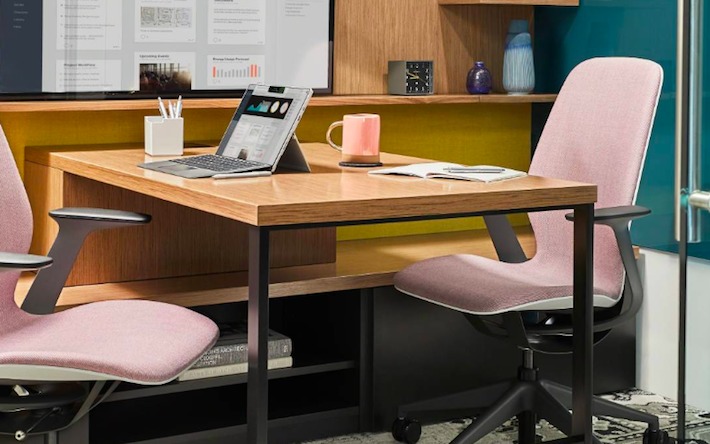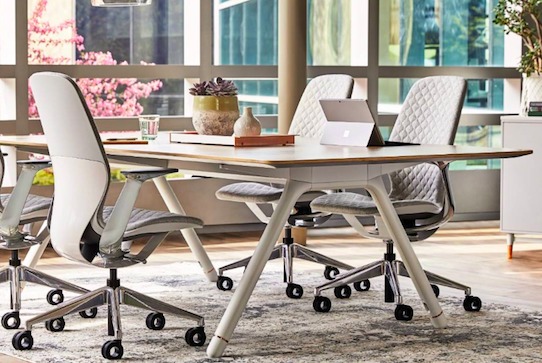SILQ is an award-winning “innovative seating design” from the furniture company Steelcase. It was designed with minimal parts and provides custom-comfort to anyone who decides to take a seat.
However, Steelcase wanted to take the personalization of this chair one step further. And so, they reached out to Fast Radius, a provider of additive manufacturing solutions, and Carbon, the Silicon Valley tech startup and digital manufacturer, to help improve the design.
The two companies have partnered with Steelcase to create a custom arm cap. They worked together to design, engineer and print the cap using Carbon’s Digital Light Synthesis technology.
By using this groundbreaking additive manufacturing method, the furniture company was able to evoke the idea that the chair is aligned with human physiology. The ability to personalize the chair to react to an individual’s body and movements is essential to the concept of the SILQ.
“Ever since SILQ first debuted, we have continued to experiment with enhancements to the chair’s design, living up to our reputation of pursuing innovation… The additive manufacturing processes from Fast Radius and Carbon enabled us to streamline the already-unique aesthetics of the chair with a lattice structure that also condensed three parts into one,” said Bruce Smith, Director of Global Design at Steelcase.
Steelcase chose to reach out to Fast Radius and Carbon because it was interested in seeing how 3D printing could improve the product development process. The company also wanted to differentiate from other products on the market by integrating unique 3D printed components onto the chair.

How Carbon’s Digital Light Synthesis Helped Reimagine an Award-Winning Chair
Carbon’s additive manufacturing technology provided numerous advantages to the product development process, such as reducing the time it takes to create a product while also reducing material waste. Another benefit of using this fast resin-based 3D printing method is that it enables consumer-specific personalization for certain parts.
Lou Rassey, the CEO of Fast Radius, explains that 3D printing allowed Steelcase to quickly refine and reiterate the design:
“Unlike traditional lengthy and expensive design cycles, the additive manufacturing process meant Steelcase could go through as many redesigns as needed to get it right. In this instance, we went from the initial idea with around 100 variables and produced over 12 unique designs in just eight weeks,” he said.
Although the armrest was initially designed in four zones, Carbon’s 3D printing technology made it possible to produce the design as one cohesive part. According to Steelcase, each of the zones provides different “attributes based on how a person’s arm might interact with it.”
Aside from using Carbon’s 3D printing technique, the startup also utilized its data-centric hardware, software, and innovative materials to create the lattice structure for the SILQ armrest. In fact, the use of lattices reduced material usage by up to 70 percent without sacrificing any functionality.
The chair recently won an Innovation Award at NeoCon 2018, which is also where Steelcase showcased multiple SIQL chairs equipped with 3D printed armrests.
There are still some enhancements to be made on the custom armrests before they hit the market. But, if you’re based in Chicago or visiting for the International Manufacturing Technology Show (IMTS), you can find the Steelcase SILQ office chair and armrest at Carbon’s exhibition booth (#431505, West Hall). The manufacturing trade show takes place from September 10th to September 15th at McCormick Place.

License: The text of "Steelcase Uses Carbon 3D Printing to Create Customized Arm Caps for SILQ Office Chair" by All3DP is licensed under a Creative Commons Attribution 4.0 International License.